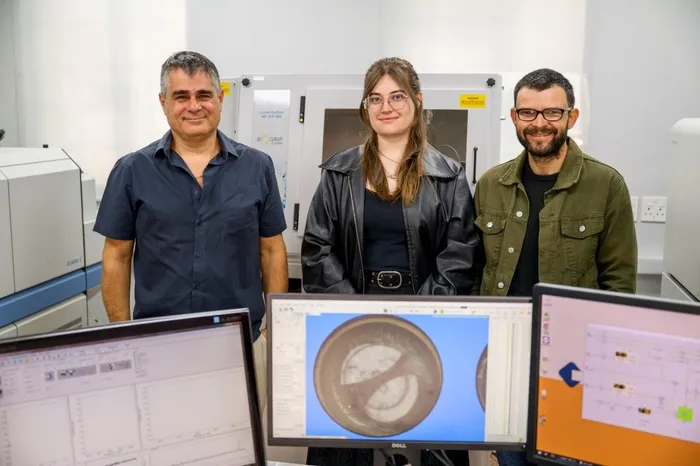Groundbreaking method utilises dinosaur eggshells for accurate fossil dating

Artistic reconstruction of a newly hatched troodontid-like dinosaur resting among fragments of its eggshell (loosely based on Mongolian microtroodontid-type). These eggshells, when buried within ancient soil, interacted with meteoric waters, leading to early uranium incorporation into the eggshell calcite crystals.
Image: Eva Utsukiyouhei
A groundbreaking study led by a Stellenbosch University researcher has unveiled a new technique that uses fossilised dinosaur eggshells to determine the age of rocks containing ancient fossils, the university said in a statement.
Dr Ryan Tucker, from the Department of Earth Sciences at Stellenbosch University, and his international team have developed a method that allows scientists to date fossil sites directly from eggshell material, bypassing the need for volcanic layers or associated minerals that are often absent. Their findings were published in Communications Earth & Environment.
“Eggshell calcite is remarkably versatile. It gives us a new way to date fossil sites where volcanic layers are missing, a challenge that has limited paleontology for decades,” said Dr Tucker.
The method involves using uranium–lead (U–Pb) dating and elemental mapping to measure trace amounts of uranium and lead trapped in the calcite structure of fossilised dinosaur eggshells. These isotopes act like natural clocks, revealing when the eggs were buried.
Tests conducted on dinosaur eggs from Utah in the United States and the Gobi Desert in Asia showed that the technique can produce ages accurate to within about five percent of known volcanic-ash dates. In Mongolia, the team was able to determine a direct age of about 75 million years, for a famous site preserving dinosaur nests and eggs, the statement said.
Dr Tucker’s team included MSc student Kira Venter and Professor Cristiano Lana from Stellenbosch University’s central analytical facilities. The statement indicated that the work was supported by collaborators from North Carolina State University, the North Carolina Museum of Natural Sciences, the Colorado School of Mines, the Mongolian Academy of Sciences, and Brazil’s Universidade Federal de Ouro Preto.
Fieldwork in Mongolia was carried out through the Mongolian Alliance for Dinosaur Exploration (MADEx) and funded by the National Geographic Society and the US National Science Foundation.
“Direct dating of fossils is a paleontologist’s dream. Armed with this new technique, we can unravel mysteries about dinosaur evolution that used to be insurmountable,” said study co-author Dr Lindsay Zanno, the head of paleontology at the North Carolina Museum of Natural Sciences.
The study, titled “U–Pb calcite age dating of fossil eggshell as an accurate deep time geochronometer,” opens new possibilities for more precise timelines in the fossil record and can be found here.

This team from Stellenbosch University developed a method to age-date fossilised dinosaur eggs. From left: Professor Cristiano Lana, MSc student Kira Venter, and Dr Ryan Tucker.
Image: Stefan Els

Looking out across the exposed fossil-bearing strata of the fossil locality Teel Ulaan Chaltsai, located in the Sainshand Sub-basin, Eastern Gobi Basin, Mongolia. The team dated eggshell from the Teel Ulaan Chaltsai locality.
Image: Ryan Tucker